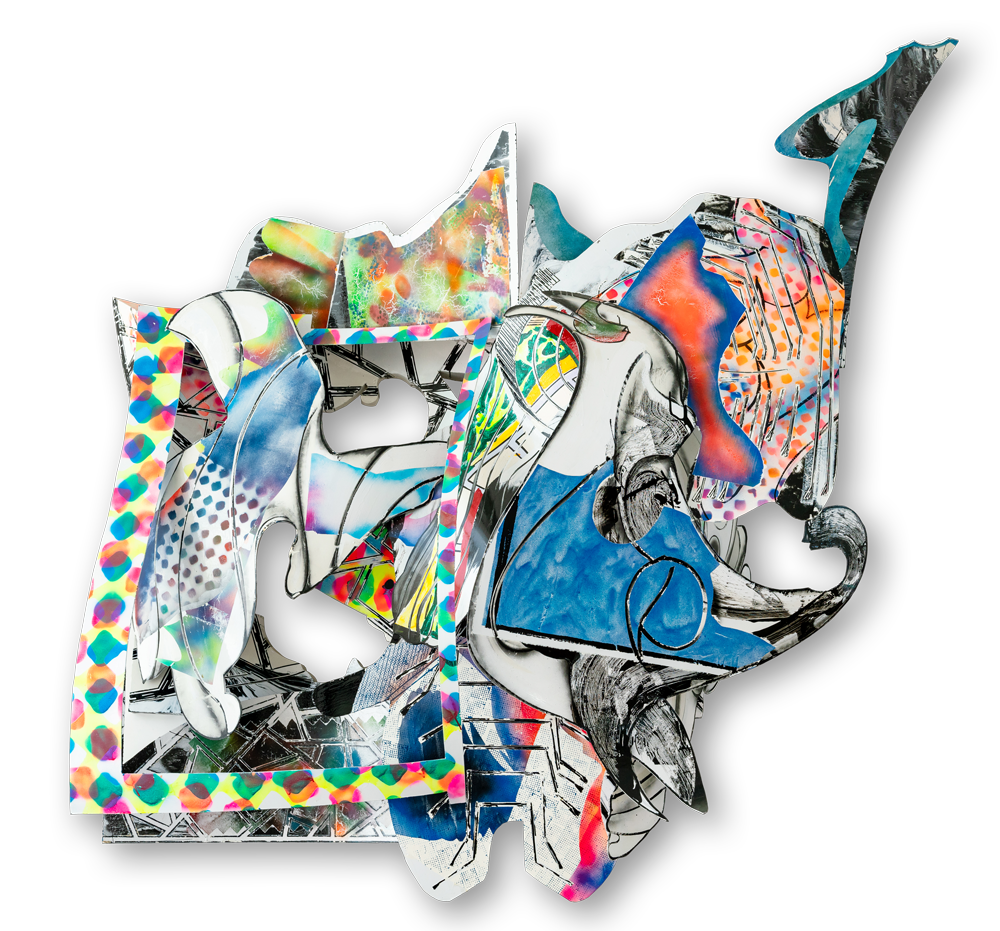Keith Boyle is an American artist born in 1930 in Defiance, Ohio. He received his B.F.A. from Iowa State College, where he studied printmaking under Mauricio Lasansky.
Upon graduation, Boyle moved to Palo Alto California, where he taught Fine Art at Stanford University from 1962 through 1986. During his tenure at Stanford, Boyle became a beloved mentor to many young artists, opening a large studio for his own work and for his students on campus. He received a grant from the National Endowment for the Arts, and his work is now featured at the San Francisco Museum of Modern Art.
Boyle did not have an easy, nor linear trajectory to arrive at his signature artistic style. As ArtForum magazine stated: “The artist experimented with almost every contemporary idiom, until he arrived at a signature format that is at the same time novel and within the mainstream of 20th century painting.”
Ultimately, with work in which one can also clearly see clearly see the additional influences of Matisse, Clyfford Still and Richard Diebenkorn, Boyle’s experimentation took him to the breakthrough moment in which he arrived at a distinctively representative style.
Using neon acrylic paint to offset the geometric material he manipulates, Boyle effects an electrically exciting sign-scape. He opens the canvas by refusing to balance the forms; his painting always reads from side to side, top to bottom or center to edge. In part, this is a negative response to the formalism that crippled his work for eleven years.
This multi-directional way of approaching subject matter references the geometric breakthroughs of formalist artists and theoreticians and artists, most notably, the Dutch pioneer in Modernist abstraction, Piet Mondrian.
To create his eventually successful effect, Boyle begins with meticulous pencil drawings, creating quasi realistic figure studies, reminiscent of drawings by Francis Bacon, an artist he also greatly admires. Yet his next step is to make these drawings strangely sinister and satirical.
This is “the twist” that begins to set his work apart, and imbues it with a brimming, borderline nastiness. If unchecked, this nastiness could tip into cartoon-like results. However, in the final work, his ever-present geometric underpinnings lessen the potential of an unforgiving, dehumanizing bite, and lends the work an unexpected lyrical subtlety.
Boyle does not succumb to “pretty” colors. His palette is deliberately gaudy and lurid, and the addition of X-marks, chevrons and “civil-defense” symbols are what create tension – and a question about whether the works can be read as landscapes, or whether this symbolism adds too much irony to allow them to be reduced to a traditional definition of landscape art.
Upon retirement from Stanford, Boyle moved to southern Oregon. He was given a solo exhibition at the Schneider Museum of Art in 1996 and served as co-curator of the Regional Perspectives Exhibition. His paintings are often considered the hallmark of Bay Area color abstractions. His work is represented in many important collections and has been exhibited in many outstanding national and international shows.
Visit The Foundation
If you are interested in visiting the RAK foundation and its collection, we would be happy to show you around. Contact us for more information.

